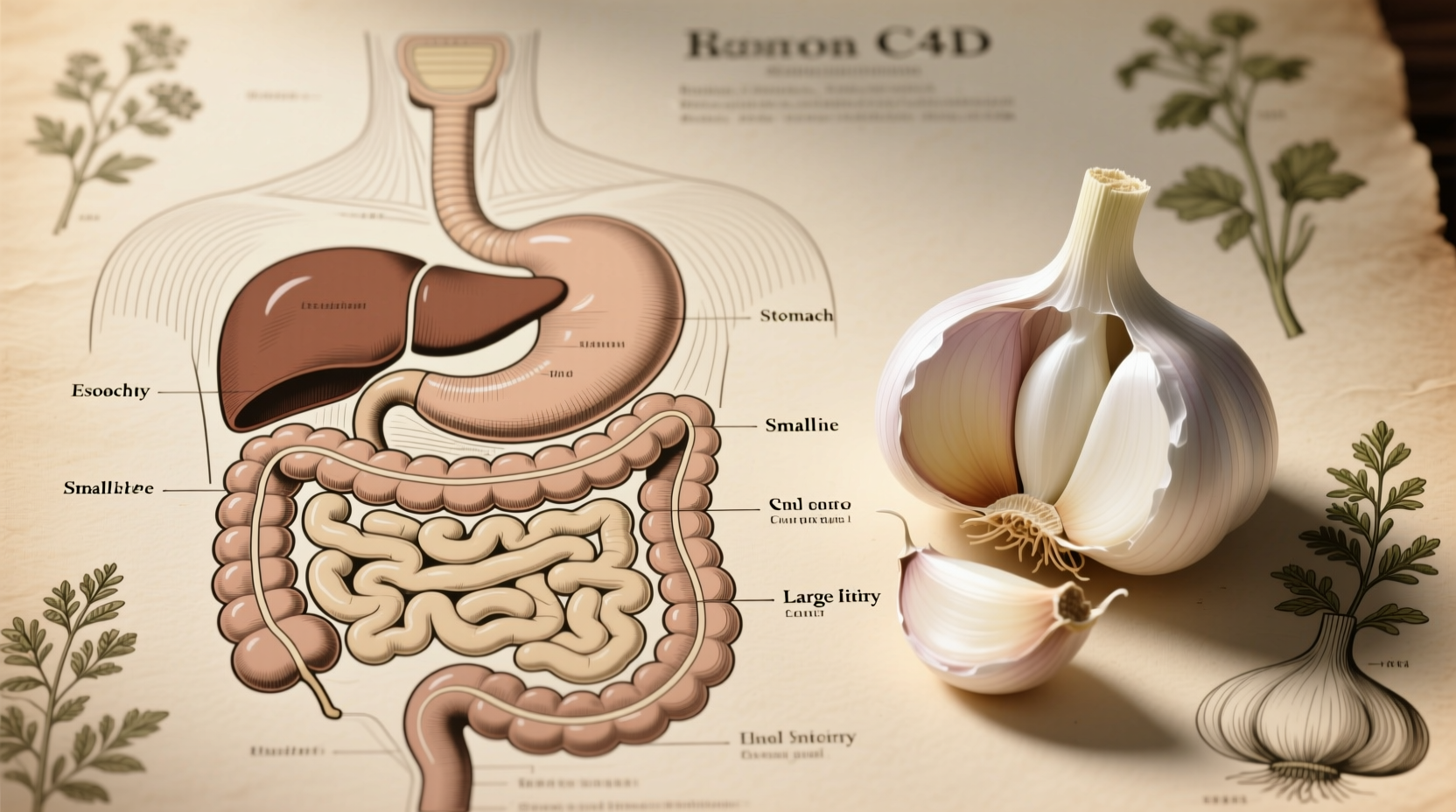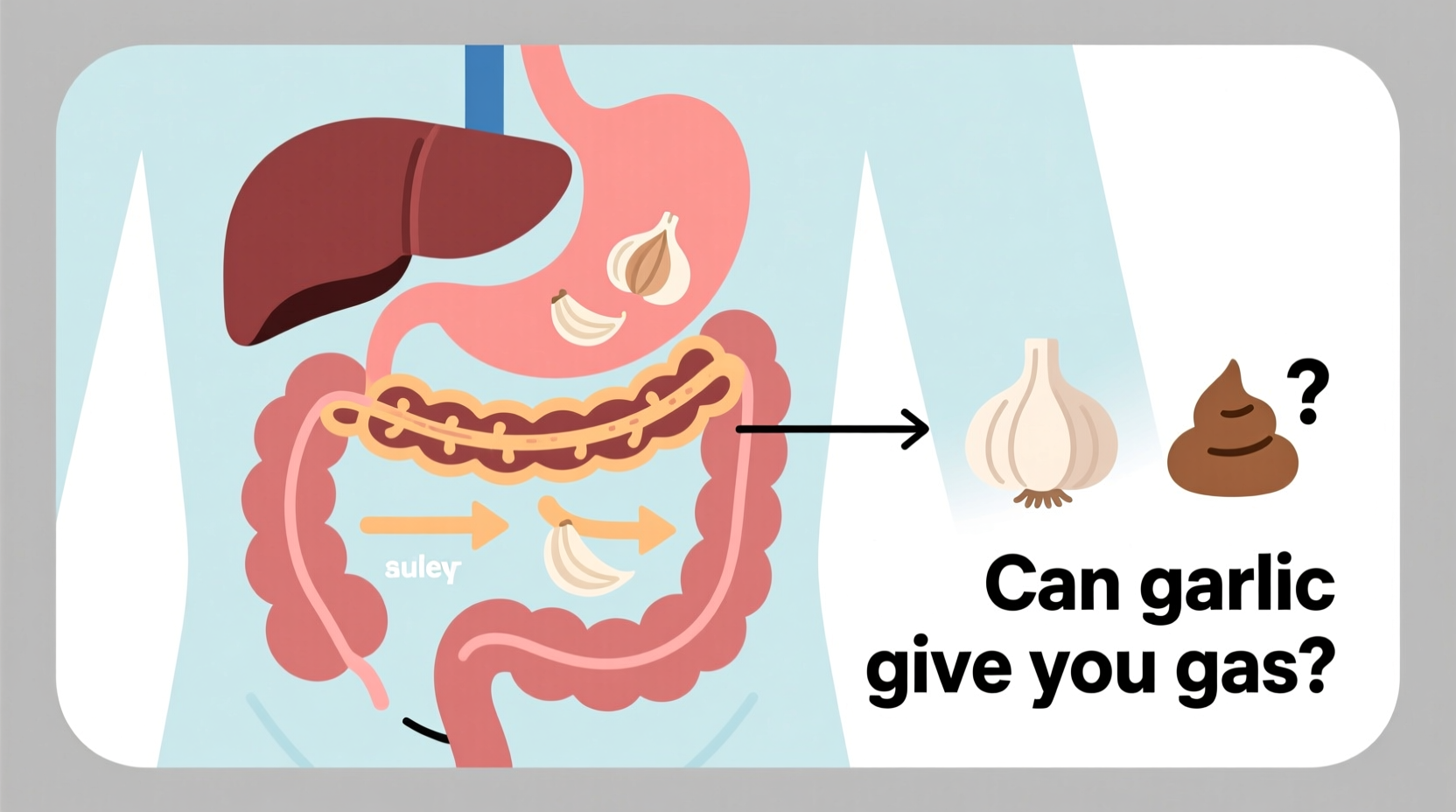Garlic isn't just a kitchen staple—it's a complex botanical with compounds that can turn your digestive system into a bubbling science experiment. If you've ever wondered why that delicious garlic bread leaves you uncomfortably gassy, you're not alone. Nearly 75% of people with irritable bowel syndrome report garlic as a trigger food, but even those without digestive conditions can experience this common reaction.
The Science Behind Garlic-Induced Gas
Garlic contains two primary components responsible for digestive discomfort:
- Fructans—a type of carbohydrate classified as FODMAPs (Fermentable Oligosaccharides, Disaccharides, Monosaccharides, and Polyols) that humans lack enzymes to fully digest
- Sulfur compounds like allicin that feed certain gut bacteria producing hydrogen and methane gas
When these compounds reach your large intestine, gut bacteria ferment them through a process called bacterial fermentation. This natural digestive process generates gas as a byproduct—typically hydrogen, carbon dioxide, and sometimes methane. The Monash University Low FODMAP diet research team confirms garlic ranks among the highest FODMAP foods, containing approximately 2.7g of fructans per clove.

How Garlic Compares to Other Gas-Producing Foods
| Food | Fructan Content (per serving) | Gas Production Level | Common Trigger for IBS |
|---|---|---|---|
| Garlic (1 clove) | 2.7g | High | 85% |
| Onion (1/2 cup) | 1.9g | High | 80% |
| Beans (1/2 cup) | 0.8g | Moderate-High | 65% |
| Wheat bread (1 slice) | 1.1g | Moderate | 50% |
Source: Monash University FODMAP Content Database (2025)
Why Some People React More Than Others
Your individual response to garlic depends on several factors:
- Gut microbiome composition—people with higher populations of gas-producing bacteria experience more symptoms
- Digestive enzyme levels—some individuals produce less fructan-digesting enzymes
- Intestinal sensitivity—those with IBS or SIBO often have heightened nerve responses to normal gas levels
- Consumption method—raw garlic causes more issues than cooked due to active enzyme content
The International Foundation for Gastrointestinal Disorders notes that cooking garlic significantly reduces its gas-producing potential by breaking down the enzyme alliinase, which creates the problematic sulfur compounds. Roasting or sautéing garlic at temperatures above 140°F (60°C) deactivates this enzyme, making it gentler on digestion.
Practical Strategies to Enjoy Garlic Without the Gas
You don't need to eliminate garlic from your diet completely. Try these evidence-based approaches:
Cooking Modifications That Reduce Gas
- Heat treatment—cook garlic thoroughly to deactivate alliinase enzyme
- Infusion method—add whole cloves to dishes then remove before eating (garlic flavor transfers without most fructans)
- Pair with digestive aids—combine with ginger or fennel which contain compounds that reduce gas formation
Portion Control Guidelines
Research from the National Institutes of Health shows most people can tolerate up to 1/8 teaspoon of garlic powder or 1 small clove of cooked garlic without symptoms. Start with minimal amounts and gradually increase as your tolerance develops.
Alternative Flavor Options
When avoiding garlic completely:
- Use garlic-infused oil (fructans don't transfer to oil)
- Try asafoetida (hing)—a traditional Indian spice with similar savory notes
- Experiment with chives or green garlic tops which contain fewer fructans
When Garlic Gas Signals Something Serious
While occasional gas after garlic consumption is normal, watch for these red flags indicating possible food intolerance or allergy:
- Severe abdominal pain lasting more than 2 hours
- Diarrhea occurring consistently after garlic consumption
- Skin rash or swelling (sign of true garlic allergy)
- Symptoms occurring with tiny amounts of garlic
According to gastroenterology guidelines published in the American Journal of Gastroenterology, persistent symptoms despite dietary modifications may indicate fructose malabsorption or small intestinal bacterial overgrowth (SIBO), which require medical evaluation.
Long-Term Management Approaches
For those with chronic digestive sensitivity:
- Implement a 6-week low-FODMAP elimination phase followed by systematic reintroduction
- Consider digestive enzyme supplements containing alpha-galactosidase before meals
- Practice mindful eating—slower consumption reduces air swallowing that compounds gas issues
- Build gut resilience through fermented foods like kimchi or kefir which balance microbiome
Remember that complete garlic avoidance isn't necessary for most people. The key is finding your personal tolerance threshold and implementing smart preparation techniques that let you enjoy garlic's incredible flavor and health benefits without the uncomfortable side effects.











 浙公网安备
33010002000092号
浙公网安备
33010002000092号 浙B2-20120091-4
浙B2-20120091-4